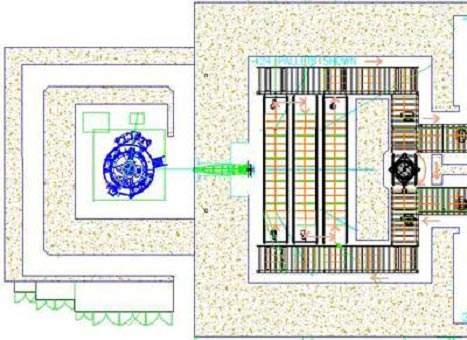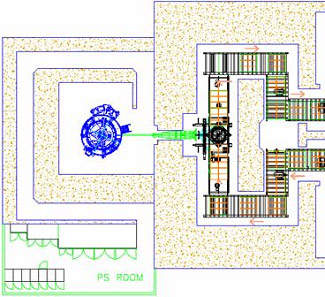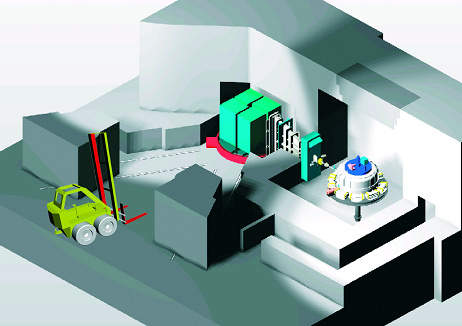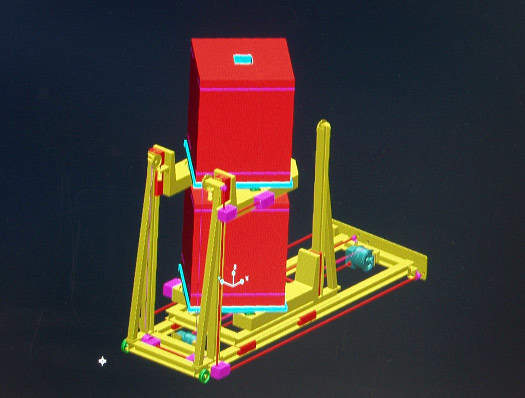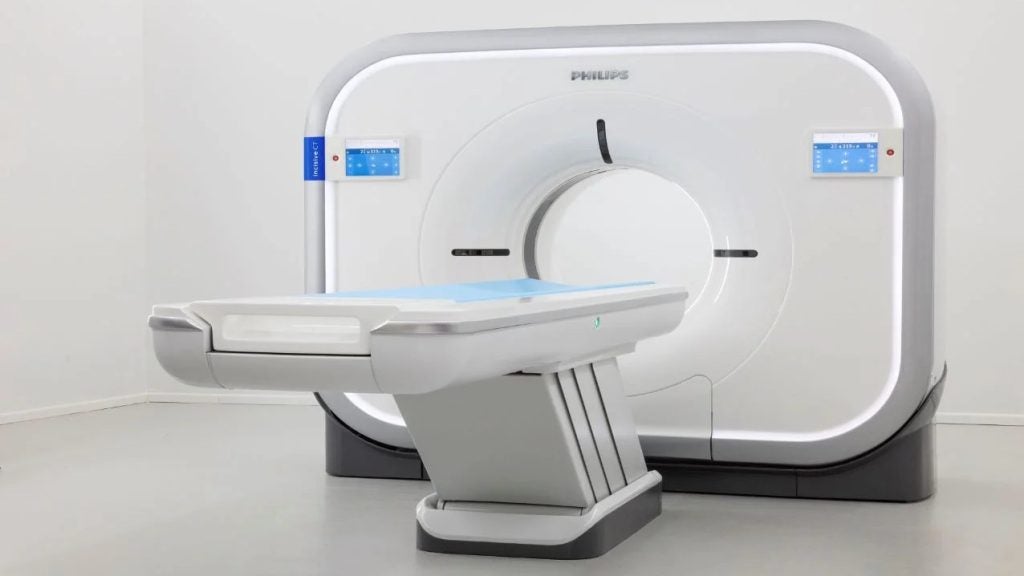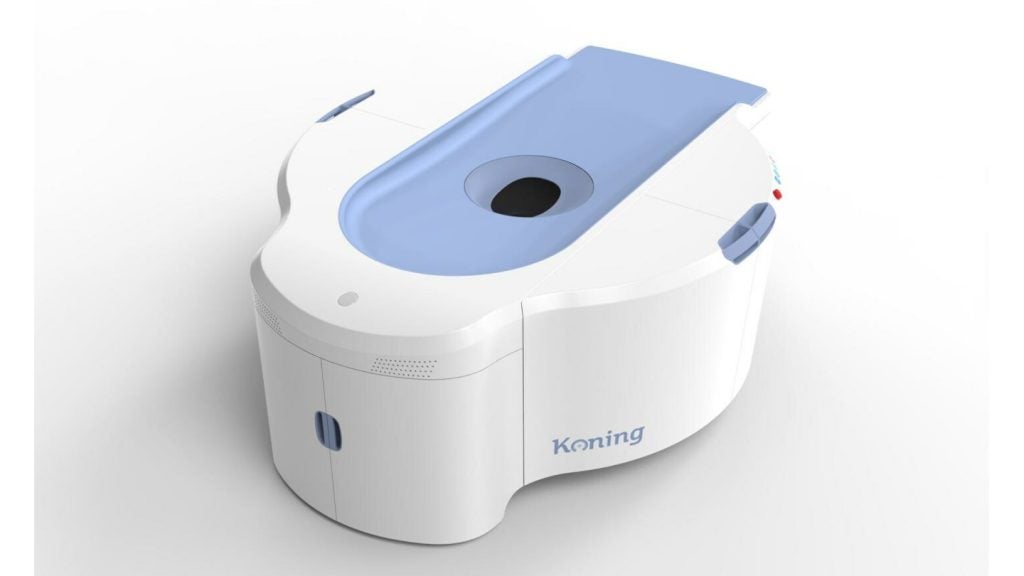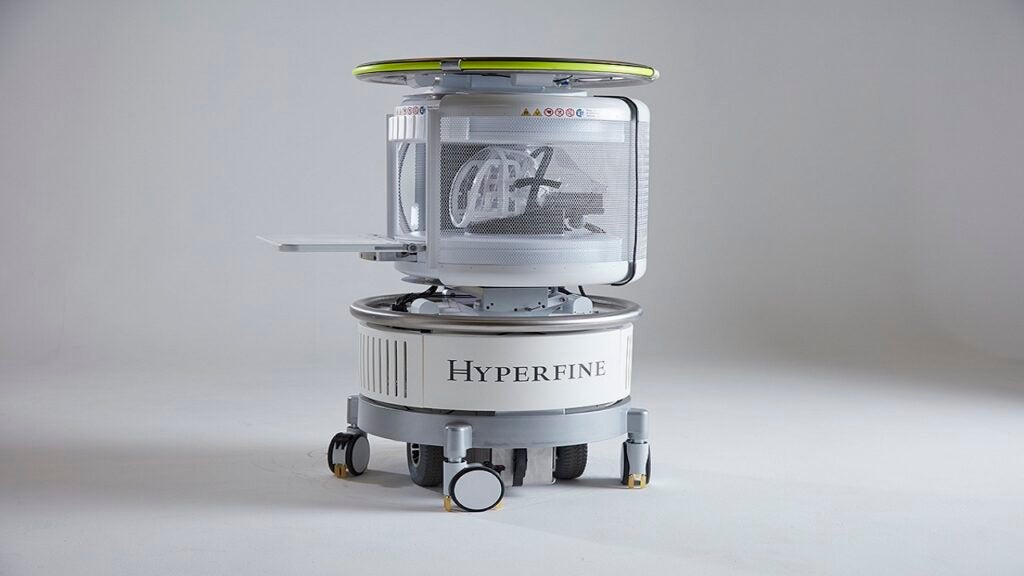High-energy X-rays (bremsstrahlung) are a form of ionizing energy that provide an attractive alternative to nuclear gamma rays for irradiating large packages and pallet loads of medical devices. Their penetration is sufficient to treat multiple pallet loads of low-density packages with low dose uniformity ratios.
X-ray sterilization is a clean process that does not leave a toxic residue in the products. At typical dose levels, the small temperature rises do not damage plastic materials. Modern, high-power X-ray generators have processing rates and costs comparable to other sterilization methods.
X-RAY CHARACTERISTICS
High-energy X-rays are high-frequency, short-wavelength electromagnetic photons. These are emitted by high-energy electrons when they are deflected by atomic nuclei. The efficiency for X-ray emission increases with the electron energy and the atomic number of the target material. Thin sheets of tantalum are used for the long targets that are needed for irradiating tall pallet loads of products. The X-ray energy spectrum is very broad, with the maximum photon energy being the same as the kinetic energy of the incident electrons. With maximum X-ray energies of 5MeV or 7MeV (million electron volts), the product penetration is greater than that provided by large, uncollimated arrays of cobalt-60 sources (1-3).
In contrast to nuclear gamma rays, which are emitted in all directions, high-energy
X-rays are concentrated in the direction of the incident electron beam, and their angular dispersion decreases as the electron energy increases. The high intensity in the forward direction enhances the efficiency for X-ray utilization and allows a reduction in the size of the irradiation room. Only a few product carriers need be in the treatment room at one time. This minimizes the treatment time per carrier and facilitates the irradiation of small batches of products with different densities and dose requirements.
X-RAY STERILIZATION METHODS
In order to obtain good dose uniformity and efficient X-ray utilization, product loads must be irradiated from opposite sides by passing at least twice by the X-ray target. The optimum thickness for two-sided treatment increases as the package density decreases. With 5MeV X-rays, the optimum thickness is about 2.6m (8.5ft) for an average density of 0.1g/cm3. A three-pass conveyor system as shown in Fig. 1 would be suitable for pallet loads of low-density packages containing lightweight medical devices, such as syringes, bandages and empty plastic containers.
The narrow angular dispersion of high-energy X-rays allows the irradiation of a single pallet while it is rotating in front of the X-ray target. This method, which is enhanced with collimators and variable rotation speeds, is called a Palletron®. The conveyor system shown in Fig. 2 would be suitable for high-density packages with heavier products, such as bottles filled with parenteral solutions. With low-density packages, a single rotating pallet would have less than the optimum thickness for efficient utilization of 5MeV or 7MeV X-rays (4).
A more appropriate system for irradiating low-density packages is shown in Fig. 3. This arrangement consists of four pallets placed on one turntable. An extension of this method that provides lower Dose Uniformity Ratios (DUR) and higher throughput rates consists of eight pallets placed in two levels on one turntable, as shown in Fig. 4. These better results are obtained by exchanging the upper and lower sets of four pallets and irradiated the entire assembly a second time. Specialized equipment accomplishes this exchange automatically (5, 6).
The data presented in Tables 1 and 2 have been obtained by Monte Carlo mathematical simulation of the absorbed dose distributions. Table 1 shows how the dose uniformity ratio varies with the product density. With the four-pallet arrangement, the DUR is below 2.0 for densities below 0.20g/cm³. With the eight-pallet arrangement, the DUR remains well below 2.0 for densities between 0.05 and 0.2g/cm³. These results can be obtained with 7MeV X-rays.
Table 2 shows how the throughput rate varies with the product density. With the four-pallet arrangement, the throughput varies from 18.5m3/h for a density of 0.05g/cm³ to 12.5m3/h for a density of 0.20g/cm³. With the eight-pallet arrangement, the throughput at 0.20g/cm³ is higher by a factor of 1.27 and varies from 23.5m³/h at 0.05g/cm³ to 16.8m³/h at 0.20g/cm³. These results can be achieved with a powerful IBA Rhodotron accelerator, which is rated for a continuous electron beam power of 700kW at 7.0MeV. Experimental validation of these concepts is in close agreement with the mathematical simulations.
CONCLUSION
Processing of products and materials with high-energy X-rays was first proposed over 40 years ago and commercial use of this method for sterilizing medical devices was initiated about 15 years ago. Several electron beam facilities in Europe, Japan and North America are equipped for both electron beam and X-ray sterilization, and a new facility intended only for X-ray sterilization will soon be operating in Belgium. X-ray processing is growing as a result of recent increases in the beam power ratings of industrial electron accelerators, which can generate intense X-ray beams.
REFERENCES
- M. R. Cleland, X-Ray Processing: A Review of the Status and Prospects, Radiation Physics and Chemistry, Vol. 42, Nos. 1-3, pp. 499-503, 1993.
- J. Meissner, M. Abs, M. R. Cleland, A. S. Herer, Y. Jongen, F. Kuntz, A. Strasser, X-Ray Treatment at 5 MeV and Above, Radiation Physics and Chemistry, Vol. 57, Nos. 3-6, pp. 647-651, 2000.
- Standard Practice for Dosimetry in an X-Ray (Bremsstrahlung) Facility for Radiation Processing, ISO/ASTM 51608:2002(E), ASTM International, West Conshohocken, Pennsylvania, 19428-2959 USA.
- F. Stichelbaut, J.-L. Bol, M. R. Cleland, O. Gregoire, A. S. Herer, Y. Jongen, B. Mullier, G. Rose, M. Vander Donckt, The Palletron: A High Dose Uniformity Pallet Irradiator with X-Rays, American Institute of Physics, AIP Conference Proceedings, Vol. 680, pp. 891-894, 2003.
- J.-L. Bol, M. R. Cleland, A. S. Herer, J.-P. Hubeau, B. Mullier, F. Stichelbaut, A High-Performance X-Ray System for Medical Device Irradiation, to be published in Radiation Physics and Chemistry, 2006.
- J.-L. Bol, F. Stichelbaut, B. Mullier, M. Abs, A. S. Herer, X. Dupuis, X-Ray Configurations for Sterilization, to be published in Radiation Physics and Chemistry, 2006.
IBA Technology Group
URL: www.iba-tg.com

